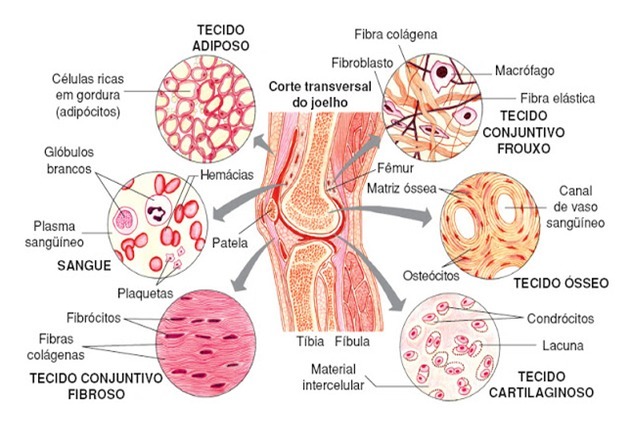Ecology is the science that studies the interaction between living beings and the environment in which they live.
The term "ecology" was used for the first time in 1866, in the work "General Morphology of the Organism", by the German biologist Ernst Haeckel.
The word Ecology comes from the Greek, where Oikos means "home" and logos means "study". In this way, ecology is the house study, that is, the environment and the interrelationships of organisms in the physical environment.
Ecology can be considered one of the most complex and broad sciences, as to understand the functioning of nature, it involves the study of different fields of study, such as evolution, genetics, cytology, anatomy and physiology.
Organization levels

When studying ecology, it is important to know that it is divided into levels of organization, which are divided into population, community, ecosystems and biosphere.
Population
The population represents the set of organisms of the same species that live together and present greater chances of reproduction among themselves.
Initially, this organization was used only for human groups, then it was extended to any group of organisms.
At species, in turn, are organisms with similar genetic characteristics. Thus, the crossing of individuals of the same species generates fertile offspring. Examples: crabs, bears, redwood, etc;
Community
The community represents the set of populations that live in the same region, in which they live in a certain place, with specific environmental conditions and interacting with each other. Also called biological community, biocenosis or biotope.
As an example of communities, we can mention the birds, insects and plants of a region.
Ecosystems
O ecosystem it is the set of communities that interact with each other and with the environment. It is formed by the interaction of biocenoses and biotopes.
The gathering of different ecosystems is known as a biome and it contains characteristics of biological diversity and environmental conditions.
Some examples of Brazilian biomes are: the Atlantic Forest, the Cerrado and the Amazon.
See also:
- Biomes of the World
- terrestrial ecosystem
- aquatic ecosystem
Biosphere
THE biosphere it is the broadest level, as it corresponds to the set of all ecosystems in different regions of the planet, that is, the place where all living beings are. It is the meeting of all the existing biodiversity on Earth.
THE biodiversity, in turn, means the variety of life that exists, encompassing all the richness of the species.
Basic concepts of ecology
For a better understanding of the living world, beyond levels of organization, modern ecology encompasses several concepts that are fundamental.
See below the definitions of the main concepts that ecology studies.
Habitat
O habitat it is the physical environment in which certain species live. Environmental conditions depend on abiotic factors that directly affect the living beings present.
Some examples are: lion habitat, savannas, and armadillo habitat, forests.
ecological niche
O Ecological Niche represents the habits and way of life of the animals that represent its niche.
For example: in the group of lions, the lionesses hunt and take care of the young, while the males defend against invaders.
Also read about:
- Habitat and ecological niche
- Conservation units
Biotic and abiotic factors
You biotic and abiotic factors they are the living and non-living beings of an ecosystem and they are interdependent.
Living things represent biotic components such as plants, animals and bacteria. The set of physical and chemical components of the environment, such as humidity, temperature and luminosity, are the abiotic components.
You can also read about:
- living beings and non-living beings
- Cellular respiration
ecological relationships
At ecological relationships are the interactions that occur between living things within ecosystems.
They can be between individuals of the same species (intraspecific) or between different species (interspecific). And they can also be beneficial (positive) or harmful (negative) for the parties involved.
Food chain
THE food chain represents the feeding relationships between the organisms of the biota.
It is through the trophic levels of the food chain that the continuous flow of energy and matter takes place.
Biogeochemical cycles
You biogeochemical cycles represent the process carried out between energy and matter, which in turn move through the environment in a cyclic way, thus cycling the essential nutrients for the maintenance of life.
Some examples of biogeochemical cycles are: carbon, nitrogen, oxygen and water cycle.
Branches of Ecology Studies
Ecology is a very broad area of biology, which is why it has many specific fields of study that are difficult to be fully delimited.
Despite being divided into animal ecology and plant ecology, plant ecology needs to know a little about animal ecology and vice versa.
Among the best known categories are:
- autoecology: is the classic study of ecology, which experimentally analyzes the relationships of an organism with its environment;
- synecology: study of communities. It is more philosophical and descriptive and can be divided into terrestrial and aquatic, which can be subdivided. For example: aquatic ecology encompasses limnology (watercourse ecology) and marine ecology (study of estuaries and the open sea);
- Demoecology: studies population dynamics, that is, it analyzes how species richness varies and why this happens;
- human ecology: studies the relationships between individuals and different human groups. It analyzes situations such as diseases, epidemics, public health and environmental quality problems.
Also know about:
- Environmental education
- Environment
- Evolution
- Genetics
- Cytology
- Anatomy
- Physiology


